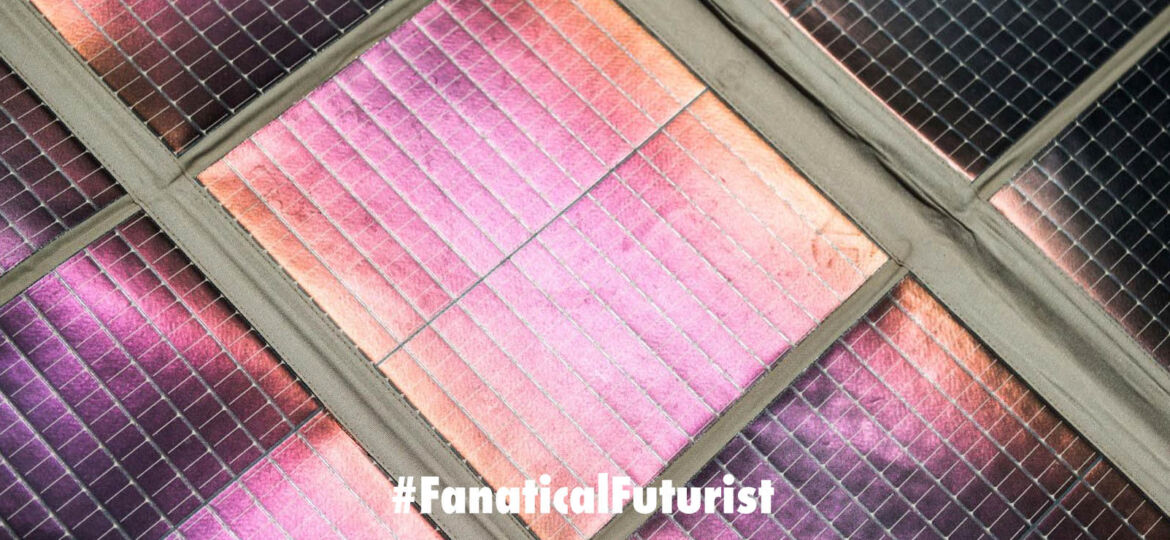
WHY THIS MATTERS IN BRIEF
Graphene’s weird properties could help create computer chips that are thousands of times faster than today’s chips.
Today’s silicon based electronic CPU’s, like the ones sold by AMD and Intel, operate at clock rates measured in gigahertz, hence the GHz acronym given to the speed of each computer chip you buy – whether that’s in a computer or a smartphone. That is, they are switching several billion times per second. As many people have said in the past Moore’s Law is starting to falter, despite advances in building transistors that are just 0.1nm and 0.5nm in size compared to today’s best cutting edge commercial transistors which are still 7nm, and by future standards even the performance of these cutting edge silicon systems is puny. But now scientists have found a way to create CPU’s that operate at Terahertz (THz) speeds – thousands of times faster than today’s top of the line CPU’s.
Recently DARPA, The US governments cutting edge military research arm dropped $1.5billion to help re-invent the US electronic industry which it feels is at risk of failing to keep up with past expectations, especially when it comes to Moore’s Law, and now a team in Germany have answered their call, in one area at least – they’ve found a way to create stable computer chips that could operate in the terahertz range.
A promising material and potential successor to silicon could be the miracle material Graphene, which has a high electrical conductivity and is compatible with all existing electronic technologies. In particular, theory has long predicted that graphene could be a very efficient “nonlinear” electronic material, in other words, a material that can very efficiently convert an applied oscillating electromagnetic field into fields with a much higher frequency. However, all experimental efforts to prove this effect in graphene over the past ten years have been less than successful, until now.
“We have now been able to provide the first direct proof of frequency multiplication from gigahertz to terahertz in a graphene monolayer and to generate electronic signals in the terahertz range with remarkable efficiency,” explains Dr. Michael Gensch, whose group conducts research on ultrafast physics and operates the novel TELBE terahertz radiation source at the Helmholtz Zentrum Dresden Rossendorf (HZDR) research institute. And not only that – their cooperation partners led by Prof. Dmitry Turchinovich, experimental physicist at the University of Duisburg-Essen (UDE), have succeeded in describing the measurements quantitatively well using a simple model based on fundamental physical principles of thermodynamics.
With this breakthrough, the researchers are paving the way for ultrafast graphene-based nanoelectronics: “We were not only able to experimentally demonstrate a long-predicted effect in graphene for the first time, but also to understand it quantitatively well at the same time,” emphasizes Prof. Dmitry Turchinovich. “In my laboratory we have been investigating the basic physical mechanisms of the electronic nonlinearity of graphene already for several years. However, our light sources were not sufficient to actually detect and quantify the frequency multiplication clean and clear. For this, we needed experimental capabilities which are currently only available at the TELBE facility.”
The long-awaited experimental proof of extremely efficient terahertz high harmonics generation in graphene only succeeded with the help of a trick – the researchers used graphene that contains many free electrons, which come from the interaction of graphene with the substrate onto which it is deposited, as well as with the ambient air.
If these mobile electrons are excited by an oscillating electric field, they share their energy very quickly with the other electrons in graphene, which then react much like a heated fluid. From an electronic “liquid,” figuratively speaking, an electronic “vapor” forms within the graphene. The change from the “liquid” to the “vapor” phase occurs within trillionths of a second and causes particularly rapid and strong changes in the conductivity of graphene. This is the key effect leading to efficient frequency multiplication.
The scientists used electromagnetic pulses from the TELBE facility with frequencies between 300 and 680 gigahertz and converted them in the graphene into electromagnetic pulses with three, five and seven times the initial frequency, in short they “up-converted” them into the terahertz frequency range.
“The nonlinear coefficients describing the efficiency of the generation of this third, fifth and seventh harmonic frequency were exceptionally high,” explains Turchinovich. “Graphene is thus possibly the electronic material with the strongest nonlinearity known to date. The good agreement of the measured values with our thermodynamic model suggests that we will also be able to use it to predict the properties of ultrahigh-speed nanoelectronic devices made of graphene.”
Prof. Mischa Bonn, Director of the MPI-P, who was also involved in this work, emphasizes: “Our discovery is groundbreaking. We have demonstrated that carbon-based electronics can operate extremely efficiently at ultrafast rates. Ultrafast hybrid components made of graphene and traditional semiconductors are also conceivable.”
The experiment was performed using the novel, superconducting-accelerator-based TELBE terahertz radiation source at the ELBE Center for High-Power Radiation Sources at the HZDR. Its hundred times higher pulse rate compared to typical laser-based terahertz sources made the measurement accuracy required for the investigation of graphene possible in the first place. A data processing method developed as part of the EU project EUCALL allows the researchers to actually use the measurement data taken with each of the 100,000 light pulses per second.
“For us there is no bad data,” says Gensch. “Since we can measure every single pulse, we gain orders of magnitude in measurement accuracy. In terms of measurement technology, we are at the limit of what is currently feasible.”
Source: HZDR
















